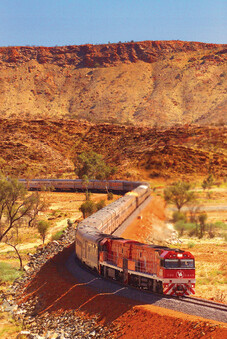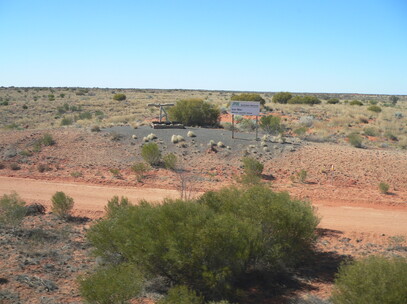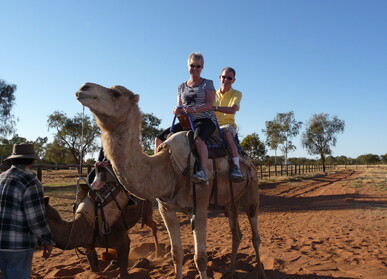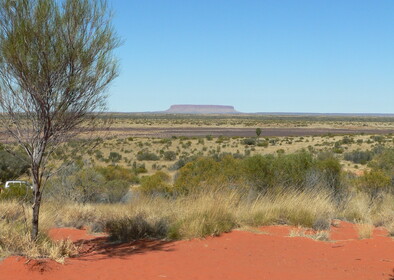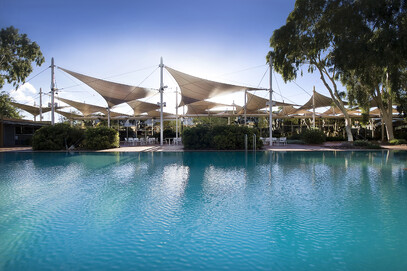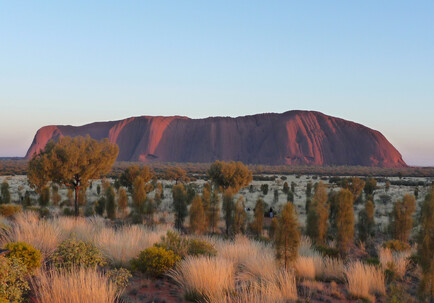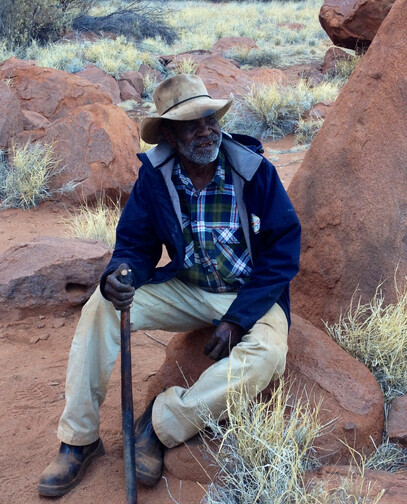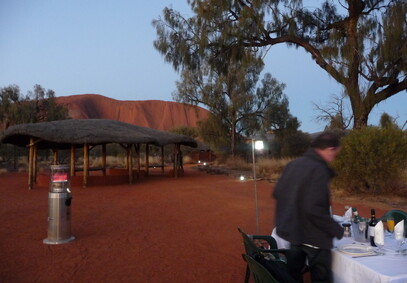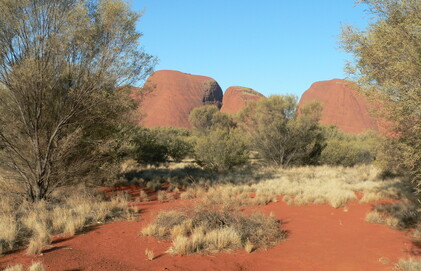Michael G. Ryan explores Australia's mystical heart.
A sleek and silver invitation to adventure, the Ghan stretches for nearly three-quarters of a kilometre along Adelaide’s Parklands Terminal. My wife Jan and I about to embark on one of the world’s great railway journeys — 2,979 kilometres from the shores of the Southern Ocean, through the endless expanse of Australia’s Red Centre and on to the lush tropical Top End and Darwin nestling on the shores of the Timor Sea. And along the way, we’ll be taking breaks from our mobile hotel to check out some of the country’s ‘must sees’ — Uluru (Ayers Rock) and Kata Tjuta(the Olgas), Nitmiluk (Katherine Gorge) and Kakadu National Park.
Exploring the vastness of Australia by luxury train is a rewarding experience. Flying is boring. And driving endless outback highways is tiring. So, as we relax with a complimentary glass of bubbles in the Outback Explorer lounge and watch the sweeping Adelaide Plains roll by, it is easy to understand why about 60,000 people enjoy the Ghan experience each year. There are three grades of service: Red, Gold and Platinum in that order of cost. Our Gold compartment with en suite and sleeper accommodation is compact but cleverly designed to make use of minimum space.
(Windfarms, Finke River, Iron Man)
As evening shadows sweep across the countryside we settle down in the delightful vintage-style Queen Adelaide Restaurant dining car and I order a kangaroo fillet as a main. And, like the rest of the three-course meal, this dish would be very acceptable in any big city restaurant. But it wasn’t always this way. The old Afghan Express rocked ‘n rolled its way down a narrow gauge track well to the east of today’s route and often ran out of both track — due to savage flash flooding — and food. Outback lore has it that on one occasion the train was stranded for two weeks and the engine driver shot wild goats to feed his passengers.
Early next morning we are on the road to Yulara. “This could be a slightly hazardous trip,” drawls Sid, our AAT Kings coach driver. A few passengers look puzzled — we’re on a major highway. “Yea,” he continues. There are only three bends and they’re hours apart so I could be caught unawares.” Chuckles all round.
There are more chuckles at the Stuarts Well roadhouse about an hour south of Alice Springs. The less adventurous passengers settle for coffee and amuse themselves watching some of us perch on camels impersonating ‘Lawrence of Arabia’, with varying degrees of success. Much to Jan’s amusement, I am jolted out of my complacency when our camel breaks into a trot. Luckily, our coach seats are extremely comfortable.
A couple of hours later we are surprised to spot Uluru looming out of the desert much sooner than anticipated. Cameras click. Sid laughs. “We call that ‘Mount Fooluru’. It’s Mount Connor our Uluru lookalike. The Red Centre’s most photographed red herring.”
Five-and-a-half hours after rolling out of Alice Springs we arrive at Yulara — the ‘place of the howling dingo.’ Located just outside the World Heritage-listed Uluru/Kata Tjuta National Park, Voyages Ayers Rock Resort is the perfect oasis from which to explore the incomparable attractions of one of the world’s most remote and inhospitable regions.
Jan and I settle in for the first of three nights at the award-winning, five-star Sails in the Desert Hotel. At six the next morning, we emerge bleary-eyed into the chilly pre-dawn darkness. We clamber aboard our Inspiring Journeys coach and doze our way towards an eye-opening experience — dawn revealing the world’s largest monolith — Uluru.
There is a sense of anticipation amongst those in the viewing area as we watch the shadows fall away from Australia’s most recognizable natural wonder. We’ve all seen numerous pictures but nothing has prepared us for the real thing. The sun eases up over the horizon behind us and a rich redness washes over the mauve monolith. Rising majestically 348 metres above the sandy floodplain with an impressive girth of 9 kilometres, 600-million-year-old Uluru is a natural light show par excellence. During the day, as the sun moves across its many faces they change through shades of fiery red, blues, pinks and browns. And when it rains — yes, it does rain here — rich deposits of iron mean that Uluru actually rusts.
Forty-five minutes, and many photographs later, we board our coach for a hearty breakfast at the Uluru-Kata Tjuta Cultural Centre. Before taking us on a walk around the base of Uluru, our two Anangu guides — Cassidy, a tribal elder who speaks no English and Arty who acts as interpreter —treat our small group to a demonstration of bushcraft, hunting and spear skills. Arty throws with deadly accuracy. He laughingly agrees with me that I couldn’t hit a dead kangaroo at five paces.
Uluru means ‘meeting place’ and many Aboriginal Dreaming tracks or ‘songlines’ intersect here. The Ananga are believed to have lived in the region for over 20,000 years and for them it is a centre of spiritual power. Walking in the shadow of this overpowering monolith with Cassidy and Arty, we gain an up close and personal insight into the forces and mythology that make this a sacred place. And we can feel it.
But the true significance of Uluru is either not understood or ignored by many visitors. I ask Arty’s opinion on a long ant-like line of tourists struggling up the rock face. “As the custodians, we don’t approve. It’s against our spiritual beliefs. And it’s dangerous. People have died and this distresses us.” I think we’ve just enjoyed a far more rewarding experience — without the risks.
Sunset. And the party is just beginning. Jan and I stand on a desert dune sipping sparkling wine, nibbling canapés and admiring uninterrupted 360° views of the vast reddening wilderness with Uluru as the blushing centrepiece. This is the prelude to a unique dining experience under the stars — the Sounds of Silence. As dusk falls, we drift with the convivial crowd down to our table in the desert — set with crisp white linen, polished silverware and glasses brimming with bubbly —to enjoy a three-course dinner; a real taste of Australia including smoked kangaroo crepes, crocodile Caesar salad and barramundi in chilli and wattle seed glaze. Afterwards, the resident ‘Star Talker’ — a kiwi — takes us on an amusing and informative tour of the dazzlingly clear night sky, which to me appears to be dusted with an infinity of glittering, smashed ice crystals. Maybe I’m influenced by the chilly desert air.
The midday temperature is over 30 degrees and rising as we board an AAT Kings coach for Kata Tjuta. A 53-kilometre drive from Yulara, Kata Tjuta — meaning ‘many heads — is an other-worldly, 600 million-year-old collection of 36 domed rock formations that rivals Uluru as a tourist magnet. The tallest rock, Mount Olga, is about 200 metres higher than Uluru.
Oven-like heat envelops us as we emerge, water bottles at the ready, from our air-conditioned cocoon into the red glow of Kata Tjuta and head for the slopes to begin our hike up the Walpa Gorge. This is Dreamtime country and as we walk, dwarfed by the moody, glowering gorge walls that seem to move under the ever-changing shades of vibrant red, iridescent orange and burnt yellows, it is easy to appreciate that for the Anangu, Kata Tjuta has great significance — a world alive with spirits and legends.
Ever the diva, Uluru has beckoned us back one final time and as sunset spreads over the countryside we enjoy wine and canapés, courtesy of AAT Travel. Slowly, the pink face of Uluru begins to redden until it seems to glow from within. We take numerous photographs but we probably won’t need them to remember this extraordinary experience.
As Uluru fades into the gathering darkness we join our AAT Kings hosts for a slap-up Aussie barbecue at the company’s exclusive venue adjoining the park’s cultural centre. Although we can’t see anything in the surrounding blackness, we feel the brooding presence of Uluru behind us. The evening is a fitting finale to our all-too-brief exploration of the mystical, magnificent Red Centre. Tomorrow we fly back to Alice Springs and board the Ghan to continue our journey to the Top End.
